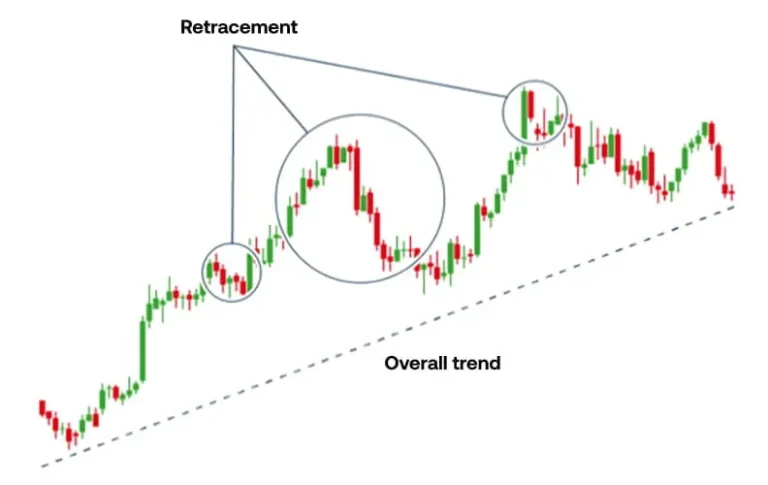Range trading is a strategy where traders buy at support levels and sell at resistance levels within a defined price range. It's primarily used by day traders and swing traders to profit from sideways market movements in various financial instruments.
- Main Benefit: Capitalizes on predictable price movements within established ranges
- Primary Concern: Limited profit potential due to range-bound price action
- Best For: Traders comfortable with technical analysis and short-term market fluctuations
- Important Note: Requires precise timing and quick decision-making to be effective
Range Trading: Advantages and Disadvantages
This table outlines the key pros and cons of range trading, helping traders understand its potential benefits and drawbacks before implementing this strategy.
| Pros | Cons |
|---|---|
| Clear entry and exit points | Limited profit potential |
| Lower risk in stable markets | Risk of losses during market breakouts |
| Suitable for non-trending markets | Time-consuming to find trading opportunities |
| Can be applied to various assets | Requires precise market timing |
| Relatively simple to understand | Not suitable for trending markets |
| Effective use of technical indicators | Potential for false breakouts |
| Allows for consistent small profits | Requires constant market monitoring |
| Minimizes emotional trading | Can lead to overtrading |
| Adaptable to different timeframes | May miss larger price movements |
| Encourages disciplined trading | Requires strong technical analysis skills |
| Reduces reliance on market trends | Can be psychologically challenging |
| Provides clear risk management | May result in frequent small losses |
| Can be practiced with demo accounts | Difficult to automate effectively |
| Useful for beginners and experts | Susceptible to sudden market shifts |
| Supports systematic trading | Can be affected by news events |
| Enhances technical analysis skills | Requires patience and discipline |
| Facilitates learning of market behavior | May lead to missed opportunities in trending markets |
| Encourages use of stop-loss orders | Can be less profitable in highly volatile markets |
| Promotes strategic thinking | Requires accurate identification of support and resistance |
| Can be automated with algorithms | May result in high transaction costs |
| Offers opportunities in sideways markets | Can be challenging during economic uncertainty |
| Reduces need for fundamental analysis | May not work well in all market conditions |
| Encourages patience and vigilance | Requires continuous market analysis |
| Can be combined with other strategies | Risk of getting trapped in false ranges |
| Provides opportunities in low volatility | Can be affected by market manipulation |
| Helps identify support and resistance | May not be suitable for all trading styles |
| Encourages use of risk-reward ratios | Can lead to missed opportunities in breakout scenarios |
| Can be profitable in stable conditions | Requires regular strategy adjustments |
| Allows for diversification of strategies | May not be effective in all financial instruments |
| Helps develop market intuition | Can be challenging during high-impact news events |
Range Trading Market Statistics
This table presents key market statistics and data related to range trading, including its prevalence, success rates, and market conditions conducive to this strategy.
| Statistical Analysis & Market Data | |
|---|---|
| Percentage of time markets spend range-bound | Approximately 70% of the time |
| Average success rate for experienced range traders | 60-65% |
| Typical profit target for range trades | 1-3% per trade |
| Average holding time for range trades | 1-5 days |
| Percentage of forex traders using range trading strategies | Approximately 30% |
| Most common timeframes for range trading | 1-hour and 4-hour charts |
| Percentage of range trades that result in breakouts | 15-20% |
| Average number of trades per month for range traders | 20-30 |
| Typical risk-reward ratio for range trading | 1:1 to 1:2 |
| Percentage of range traders who use additional indicators | 85% |
Range Trading Technical Requirements
This table outlines the technical specifications and requirements for implementing a successful range trading strategy, including tools, skills, and market conditions.
| Technical Specifications & Requirements | |
|---|---|
| Minimum account balance recommended | $5,000 for proper risk management |
| Essential technical indicators | RSI, Stochastic Oscillator, Bollinger Bands |
| Recommended charting software | TradingView, MetaTrader 4/5, NinjaTrader |
| Minimum internet speed required | 10 Mbps for real-time chart updates |
| Optimal market conditions | Low volatility, sideways price action |
| Risk management tools | Stop-loss orders, position sizing calculator |
| Recommended timeframes | 1-hour, 4-hour, and daily charts |
| Key price action patterns | Double tops/bottoms, head and shoulders |
| Minimum trading experience | 6-12 months of active trading |
| Required analytical skills | Support/resistance identification, trend analysis |
Range Trading Cost and Value Analysis
This table provides an analysis of the costs associated with range trading and the potential value it can offer to traders, including both financial and non-financial aspects.
| Cost & Value Analysis | |
|---|---|
| Average monthly profit potential | 5-15% of account balance |
| Typical spread costs for range trading | 1-3 pips per round trip |
| Monthly subscription cost for premium indicators | $30-$100 |
| Time investment for market analysis | 2-4 hours per day |
| Potential drawdown during losing streaks | 10-20% of account balance |
| Cost of education and training | $500-$2000 for comprehensive courses |
| Value of reduced emotional stress | Improved trading psychology and discipline |
| Potential savings on commission fees | 30-50% compared to day trading |
| Cost of backtesting software | $100-$300 per year |
| Value of increased market understanding | Enhanced overall trading skills and knowledge |
Range Trading vs Other Trading Strategies
This table compares range trading to other popular trading strategies, highlighting the key differences, advantages, and disadvantages of each approach.
| Comparative Analysis & Alternatives | |
|---|---|
| Range Trading vs Trend Trading | Lower risk, more frequent trades, smaller profits |
| Range Trading vs Day Trading | Less time-intensive, lower stress, fewer trades |
| Range Trading vs Swing Trading | Shorter holding periods, focus on sideways markets |
| Range Trading vs Scalping | Larger profit targets, less reliance on speed |
| Range Trading vs Position Trading | More active management, shorter-term focus |
| Range Trading vs Breakout Trading | Opposite approach, profits from non-volatility |
| Range Trading vs News Trading | Less event-driven, more technical analysis-based |
| Range Trading vs Grid Trading | Manual entry/exit, less reliance on automation |
| Range Trading vs Martingale Strategy | Lower risk, doesn't rely on doubling positions |
| Range Trading vs Value Investing | Short-term focus, technical vs fundamental analysis |
Future of Range Trading
This table explores the future outlook and industry trends for range trading, including technological advancements, market changes, and evolving trader preferences.
| Future Outlook & Industry Trends | |
|---|---|
| Integration of AI and machine learning | Enhanced pattern recognition and trade execution |
| Increased use of algorithmic trading | Automation of range trading strategies |
| Impact of high-frequency trading | Potential narrowing of trading ranges |
| Shift towards mobile trading platforms | Greater accessibility for range traders |
| Growing popularity of social trading | Increased sharing of range trading strategies |
| Evolution of risk management tools | More sophisticated stop-loss and take-profit features |
| Impact of regulatory changes | Potential restrictions on leverage and trading practices |
| Integration with cryptocurrency markets | New opportunities for range trading in digital assets |
| Advancements in market data analysis | Improved identification of range-bound markets |
| Shift in trader demographics | Younger generations adopting range trading strategies |







